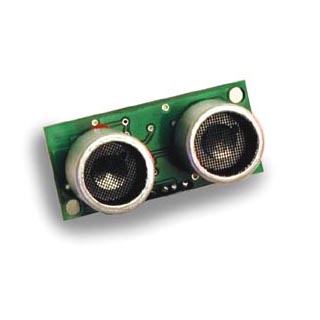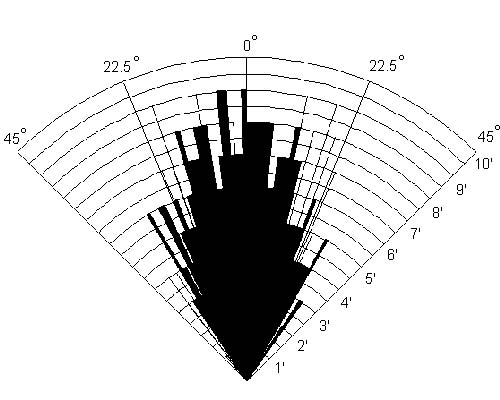-
Sonar (Ultrasonic Sensing)
-
Active vs Passive
-
Active Ultrasonic Sensing
-
Polaroid's Role in Ultrasonic Sensing Technology
-
Technological Issues: Signal Gain
-
Other Issues: Sound Reflection
-
The Devantech SRF04
-
Pros and Cons
Sonar (Ultrasonic Sensing)
Sound Navigation and Ranging
- developed during WWII to find submarines. (works well underwater,
where Radar - Radio Detection and Ranging - doesn't work.)
- uses sound energy to
- locate objects
- measure their distance
- produce pictures of them
Active vs Passive
Active: uses a transmitter to convert electrical enery to sound energy.
Sound waves travel until they strike an object, which reflects them in
various directions. Some reflected waves return to sonar, where they strike
a receiver. Distance is determined by measuring the time it takes for
the sound wave to travel from the transmitter, bounce, and travel back
to the receiver.
Passive: only receives sound waves. Can be used to detect the direction
of an object, for example.
Active Ultrasonic Sensing
- transmitter circuit causes ultrasonic burst ("chirp") to be emitted
from a speaker element.
- sound travels and is reflected back
- receiver circuit tuned to detect specific frequency of sound emitted
by the transmitter.
In normal room temperature, sound travels approximately 1.1 ft/millisecond.
(i.e., it takes .89 milliseconds to travel 1 foot)
Polaroid's Role in Ultrasonic Sensing Technology
Technology first popularized by Polaroid: used to measure distance from
camera to subject for control of autofocus system. (Currently, infrared
typically used.)
One popular sonar device, the Polaroid 6500, has a single ultrasonic
transducer that acts both as a transmitter and receiver.
Technological Issues: Signal Gain
As sound disperses through air, volume falls at square of distance.
Yet more dispersion as sound travels back. So an echo from a faraway
object may be one millionth the strength of one nearby.
Solution: Variable gain amplifier that is automatically controlled through
a sequence of steps. The gain is increased as time elapses.
Other Issues: Sound Reflection
When sound strikes an irregular object, produces collection of reflected
sounds.
When sound strikes a long flat surface, reflects like a beam of light off
a mirror. In this case, little or no sound is aimed back at the transducer.
The Devantech SRF04

Has both a transmitter and receiver.
Range: 3cm to 3m. (Approximately 3 inches to 10 feet)
Sensitivity: 3cm stick at > 2m.
Beam pattern:

For more info, go to: http://www.acroname.com/robotics/parts/R93-SRF04.html
Pros and Cons
Pros:
- low cost
- can effectively provide distance to objects
- produces tractable amount of data for interpretation
Cons:
- poorer discriminatory ability than vision
- susceptible to noise/distortion
- can produce erroneous data (reflections)
Best for obstacle detection and avoidance at short range.
Note: can't be used in outer space - needs a medium for transmission of
sound wave.


